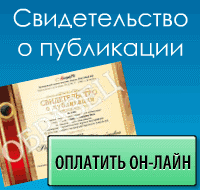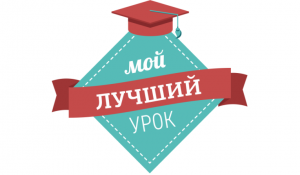Стили живописи
(Урок в 9 классе)
Алсу ГАЗИЗОВА
учитель I квалификационной категории средней школы № 127 г. Казани
Тип урока: урок совершенствования и углубления знаний и умений.
Ход урока
- I. Организационный момент
- II. Вводная беседа по курсу и теме модуля
Listen to the tape.
What words do you hear? (we hear geometrical shapes)
Are they similar in our language? Yes, they are similar.
III. Основной этап
Ввод новой лексики:
– Ex. 1. Listen and repeat! Слушают и проговаривают названия геометрических фигур.
| rectangle | triangle | square | cube | cylinder |
– Read and translate. One by one. У1→У2→У3…
По цепочке читают и переводят название геометрических фигур.
How do you think why do we take them in our lesson? Can we tie them with our topic today? (We take them because they are closely connected with our today`s topic. They brightly represent two unusual styles of painting of that time.)
What are they?
You are absolutely right. We are going to talk about the most unusual styles of art : cubism and surrealism.
I would like you to choose the styles. ( pupils choose).
Now listen to the tape and choose the main points of each style.
| Cubism | Surrealism |
| · Was popular around the 1900s
· Pablo Picasso, George Braque · New way of seeing the world · Look at an object or a person and break it down into shapes · Use geometrical shapes · Dark, dull colours · Layers, viewpoints |
· Was popular from the 1920s to the 1960s
· Salvador Dali, Rene Magritte · Have an element of surprise in paintings · Put strange images and ideas together to create strange presentation of things · Dreams and imaginations · Bright colours, impact |
Now, have a look at these two photos. What style do they belong?
I would like to describe them according the plan:
This painting is called…. . ….painted it in 19… . It shows…… . The painter uses ….colours. The painting makes me feel….(astonished, anxious,curious,confused,excited).
- Закрепление новой лексики
| Georges Braque
Man with a Guitar |
Salvador Dali
Swans Reflecting Elephants |
| This picture shows many different lines and shapes like squares and triangles. I can see other things such as parts of bodies and objects.
The artist has used many dull colours as brown, grey, green in the painting. The painting makes me feel quite and astonished. |
This picture shows many strange shapes and objects. I can see swans on a smooth lake but they have the reflection of elephants in the lake. The lake is surrounded by rocky landscapes and unusual trees with a clear blue sky.
The artist has used bright colours in shades of blue, brown, and yellow in the painting. The painting makes me feel curious and astonished with this idea. |
Great work. Well done.
I would like to quote some words of wisdom by Pablo Piccasso
“Painting is just another way of keeping the diary”
I hope you will keep your life diary in bright, positive, happy way.
As you see nothing stops in history, everything changes and develops sometimes in a very strange and unusual way but it is still the history we are interested in and admire.
Thank for your work and attention.
Homework Idioms with paint
1 like watching paint dry (смотреть, как сохнет краска)
2 paint the town red (уйти в загул)
3 paint… with the same brush (нарисовать…с той же кистью)
4 paints a grim picture of (рисует мрачную картину)
Сomplete the sentences with the correct idioms. Check in Appendix 3. Are there similar ones in your language?
1 This film is so boring it’s like watching paint dry.
2 I want to have some fun. Let’s go out tonight and paint the town red.
3 I know Sam and Dan can be a bit boring but don’t paint Tim with the same brush. Not all people who like science fiction are bores!
4 The documentary paints a grim picture of life in the war-torn region.
Ex.10 describe the pictures.
- Подведение итогов
What have you learned today?
Marks.


